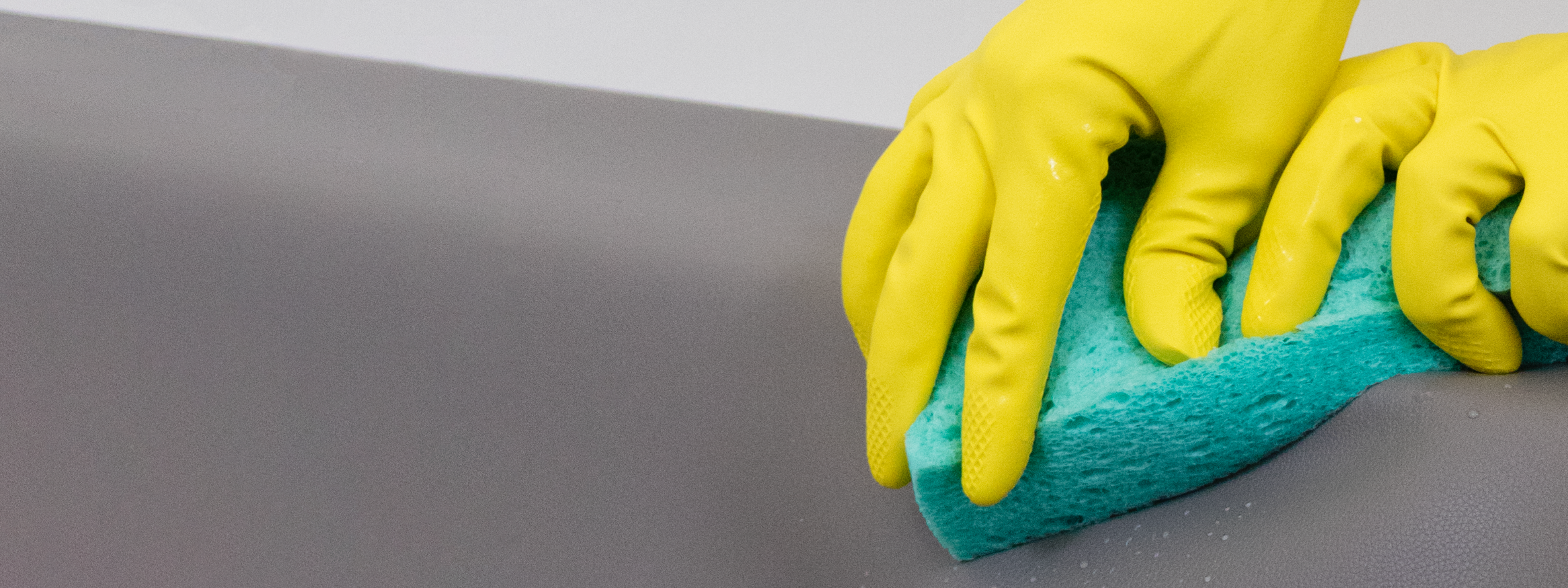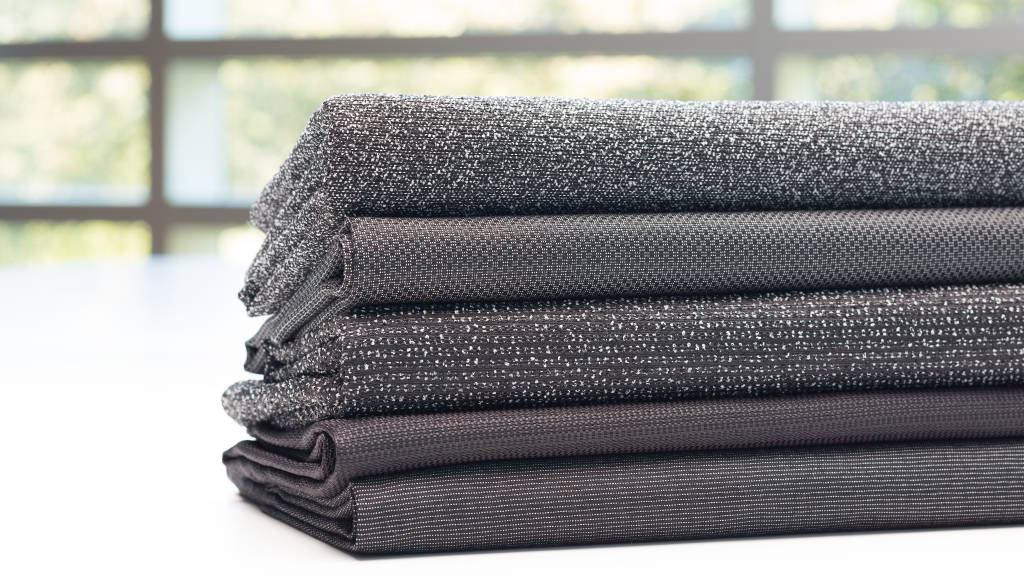
This article is an update to our Steelcase guide “Navigating What’s Next: The Post-COVID Workplace.”
The COVID-19 pandemic is changing us in so many ways — one of the most noticeable being our definition of cleanliness. Hand sanitizer, hand soap and disinfectant wipes are difficult, if not impossible, to find at stores. We’re no longer just worried about dirt we can see; we’re guarding against a highly contagious virus, as well as all the invisible germs we’ve always tried to clean. It’s a physical concern that carries with it a significant mental and emotional load. As companies consider how to transition people back to the workplace, the ways we clean, disinfect and sanitize must not only change, they must also be more transparent. The first step is to simplify the complexity around what a clean office means.
One silver lining here is that a new dialogue is opening up between manufacturers and facility managers. Information about how to safely clean materials used in a variety of furniture applications has always been included in accompanying brochures or manuals. These detailed descriptions can be too easily set aside until they’re needed. Steelcase experts in surface materials suggest that, just as we check the labels on our clothes before washing them, we should also check the cleaning guidelines for fabrics and surfaces in the workplace and use the method that is the least likely to cause damage while still being effective. Now that the spotlight is on infection control, this information still accompanies each product, but it’s also becoming more user-friendly and there’s a renewed focus on a mutually-beneficial back-and-forth conversation between materials experts and the people taking care of workplaces around the world.
As new scientific discoveries are made around virus transmission, we’ll continue to add to our knowledge about what can stop the virus from spreading. But after more than a century of using internal labs to rigorously test our products, we can share what we know right now by helping to define some commonly used (and misused) terms.
Cleaning, disinfecting and sanitizing are not the same thing.
What’s the Difference Between Cleaning, Disinfecting, and Sanitizing?
Cleaning removes germs, dirt and impurities from surfaces or objects with soap (or detergent) and water. Cleaning does not necessarily kill germs, but lowers their numbers and the risk of spreading infection.
Disinfecting uses chemicals (for example, EPA-registered disinfectants) to kill germs on surfaces. It does not necessarily clean dirty surfaces or remove germs, but by killing germs on a surface after cleaning, it can lower the risk of spreading infection.
Sanitizing lowers the number of germs on surfaces or objects to a safe level. This process either cleans or disinfects surfaces and objects to lower the risk of spreading infection.
Cleaning products used to eliminate stains may not always be effective disinfectants and vice versa. Learn more about our recommendations for how to clean and disinfect hard and soft surfaces at Cleaning Your Steelcase Products.
A broad range of choice
In addition to considering how to clean existing products, organizations are considering what materials they should add in the future. The good news is offices are not limited to just a few options that may feel very clinical, just because they need to clean and disinfect with a bleach cleanable product.

New Black is an example of a collection of Steelcase materials that are bleach cleanable.
“There’s worry from customers and designers that in order to provide more materials that are cleanable with a disinfectant, the pendulum will swing too far and environments will shift to feeling sterile,” says Kari Miller, Steelcase surface materials product manager. “But that doesn’t have to be the case. There is already a broad range of designs from Steelcase, Designtex and our partners — hundreds of options in textiles, hard and soft surfaces and other materials that can be cleaned and disinfected without degrading the surface.”
Beyond cleaning and disinfection, another common question is about antimicrobial additives. It’s important to note, antimicrobials do not translate to virus protection and are not always recommended.
What are antimicrobials?
The term antimicrobial indicates a property or function of a material that kills or inhibits the growth or action of micro-organisms which include bacteria, fungi and viruses. Antimicrobials can come from an inherent material attribute, physical structure or chemical additive. Antimicrobials can target specific groups of micro-organisms (e.g. antibacterial, antifungal, antiviral), specific members of a group, or may act more broadly.
Known antimicrobial technologies currently available for fabrics and surfaces have not been proven to combat or inhibit viruses such as the coronavirus. Some customers do require antimicrobial additives and, as a result, Steelcase has options available for high-touch surfaces such as seating fabrics and worksurface laminates.
Advancements are being made in antimicrobial additives and technologies, and material manufacturers including Designtex are constantly evaluating new findings and technology. Whether an organization chooses antimicrobials or not, the best way to reduce the risk of spreading infections is to clean and disinfect all surfaces and remind people to wash their hands (see CDC recommendations).
While materials have always been rigorously tested for cleaning, they haven’t always been tested for disinfection. The coronavirus has accelerated testing of how materials and products react to disinfecting solutions. The Steelcase test lab is up and running, so that materials experts can learn and share more about what is compatible and what is not.
“There is an exciting sense of urgency around materials science right now as well as work being done on possible disinfecting and cleaning solutions,” says Melissa Hart, Steelcase surface materials product director. “We are working with Designtex and our partner network to monitor, review and evaluate solutions and their impact on our portfolio of materials. We’re committed to sharing what we learn as quickly as possible.”
Resources available now:
- Cleaning Your Steelcase Products page, where you can find more details on the topic, including the compatibility of Steelcase products with cleaning and disinfecting supplies and frequently asked questions.
- Designtex Cleaning Manual
- Surface Materials Reference Manual condensed version with only cleaning information
- A list of bleach cleanable materials are in the Steelcase Finish Library, filter by “bleach cleanable”
 Open image tooltip
Open image tooltipNavigating What’s Next
To learn more about design considerations when planning for the now, near and far time horizons, read the Navigating What’s Next: The Post-COVID Workplace guide.


